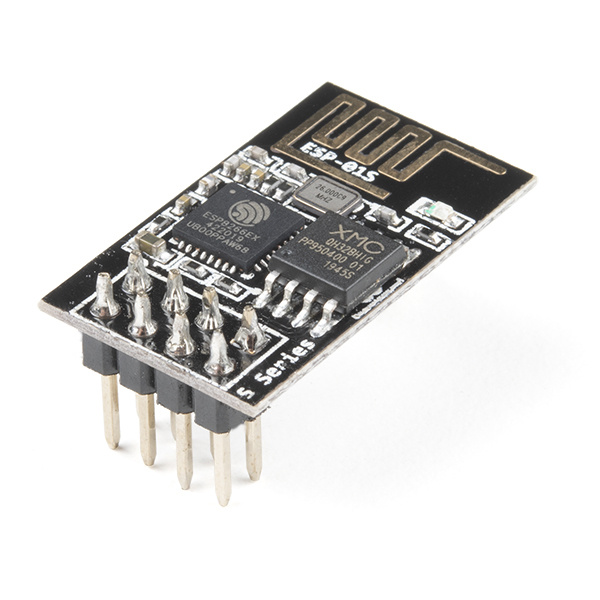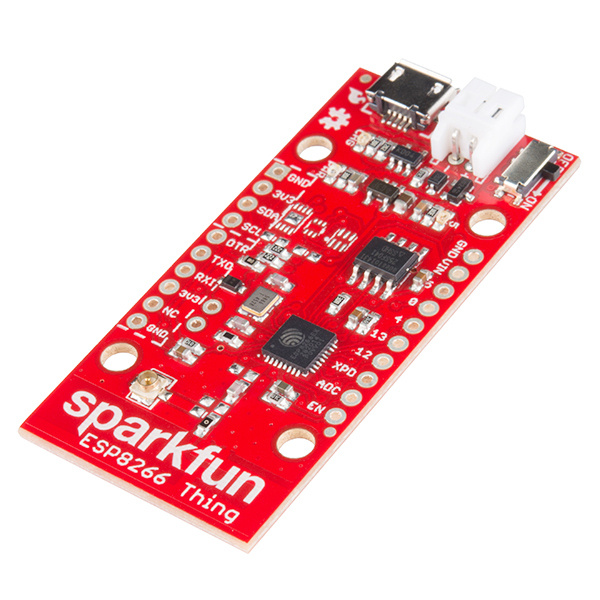ESP8266 Thing Hookup Guide
Introduction
Over the past year, the ESP8266 has been a growing star among IoT or WiFi-related projects. It's an extremely cost-effective WiFi module, that -- with a little extra effort -- can be programmed just like any microcontroller. Unfortunately, the ESP8266 has mostly only been available in a tiny, modular form, which, with limited I/O and a funky pin-out, can be difficult to build a project around.
SparkFun's new development board for the ESP8266 breaks out all of the module's pins, and comes equipped with a LiPo charger, power supply, and all of the other supporting circuitry it requires. We lovingly call it the Thing -- it's the perfect foundation for your Internet of Things.
Covered in this Tutorial
This tutorial will familiarize you with all things SparkFun Thing. It's split into sections, which cover:
- Hardware Overview -- A quick rundown of the Thing's components and pinout.
- Powering the Thing -- The Thing can be powered through either USB or a LiPo battery.
- Programming the Thing -- Interface a 3.3V FTDI Basic with the Thing to program it.
- Hardware Assembly -- Tips and recommendations on what to solder to the Thing's I/O pins.
- Installing the ESP8266 Arduino Addon -- The Thing can be programmed using Arduino! Just follow the instructions here to install the board definitions.
- Example Sketch: AP Web Server -- Set the Thing up as an access point and use it to serve web pages.
- Using the Arduino Addon -- There are a few key differences between programming the Thing and any other Arduino board.
Required Materials
To follow along with this tutorial, and get up-and-running with the Thing, you may need a few extra tools and materials. This wishlist includes everything we use in this tutorial to program and use the Thing if you are ordering the board individually:
Suggested Reading
Before continuing on with this tutorial, you may want to familiarize yourself with some of these topics if they're unfamiliar to you:


